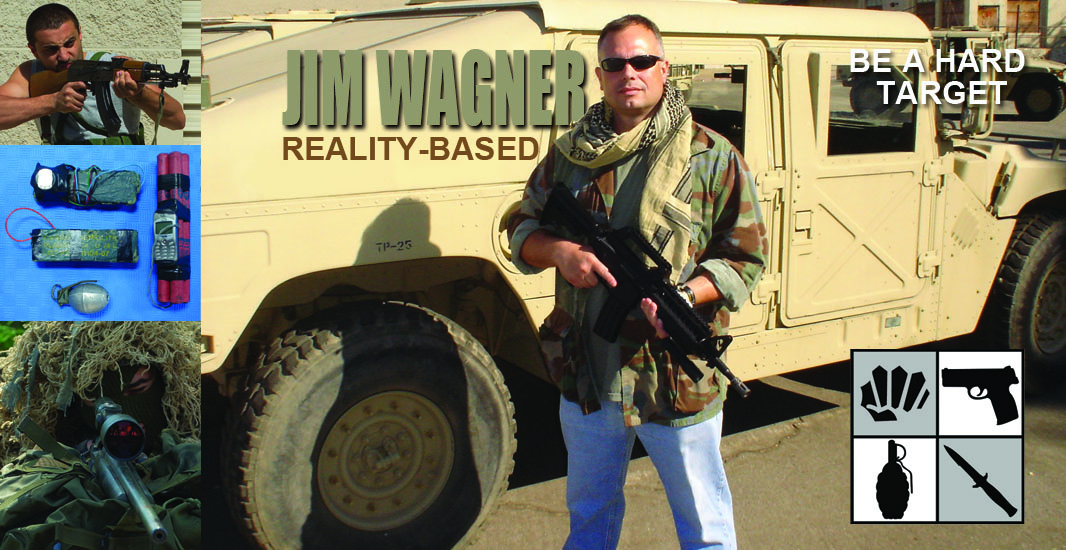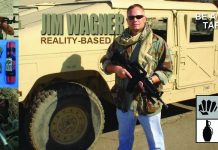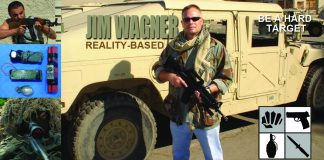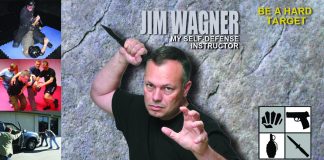Do you carry a pair of handcuffs with you? Most martial artists don’t. How then are you going to restrain a suspected criminal, whether you’re the victim or just helping to restrain the person until the police arrive? This is a post-conflict situation you have to think about.
You probably won’t give up your own belt or your own shoestrings to create an improvised restraining device, especially if the suspect is still struggling to get away. Most likely you’ll do like most people would do in the same circumstance, and that is to force the bad guy to the ground and hold him down. If there are a few of you to control the suspect it may end up in a big dog pile where everyone is forcing the suspect down.
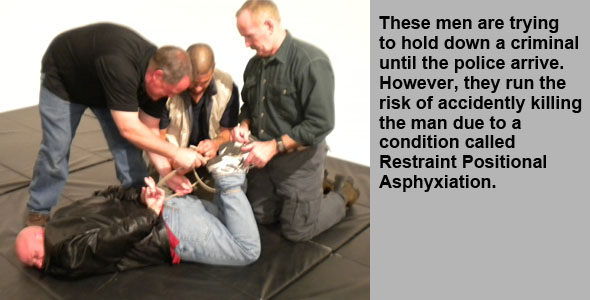
If the suspect screams out, “Get off of me, I can’t breath!” you’re not going to fall for that trick, are you? Now imagine this, a few minutes later the person you are holding down is dead. Regardless of what crime the suspect may have committed, the police are going to charge you with manslaughter even though you may have been the victim initially or you were just a Good Samaritan trying to keep a criminal from escaping.
The situation I just described is an all too common phenomenon known as positional asphyxiation or more correctly restraint positional asphyxiation. Such deaths occur by people who are not properly trained in submission holds and arrest and control techniques.
Most police officers and military peacekeepers are taught about the dangers of positional asphyxiation. I first received my instructions in this subject back in 1999 when the law enforcement community was first seriously addressing in-custody deaths, and then I took the same course again in Germany with the Federal Police counterterrorist team GSG9 in 2000 when the Europeans were first addressing this universal problem. Since 2003 I have included this training in my Reality-Based Personal Protection Ground Survival created for civilian martial artists.
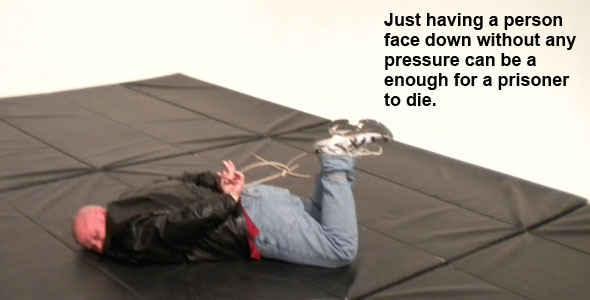
How does positional asphyxiation happen? Put simply, it is a death that occurs when a subjects body position interferes with breathing, or when external force is applied, and the person cannot get enough oxygen because they are unable to correct the lethal position.
Most suspects when being held down, whether to force submission or prevent escape, are placed in a prone, or face-down, position on the ground. The person, or persons, using this controlling force are usually on top of the suspect applying pressure by putting their knees in the suspect’s back, pushing down on his back with their hands, sitting on him, or laying on him. The weight being exerted causes compression of the chest and limits the suspect’s ability to expand the chest cavity. The suspect’s abdominal organs may be pushed upward restricting the movement of the diaphragm, further limiting available space for the lungs to expand. Obesity puts a person at an even higher risk.
The suspect just after a fight, or who is still struggling while on the ground, needs more oxygen to fuel the muscles, and that includs the heart. When the heart does not get enough oxygen it may begin to beat faster or out of rhythm causing a fatal cardiac dysrhythmia or respiratory arrest. If the suspect is irrational, overly aggressive, or psychotic (such as manic-depressive psychosis or chronic schizophrenia) they increase the potential for falling victim to positional asphyxiation due to a condition known as excited delirium. Drugs in the suspect’s system, mostly cocaine induced, can cause drug-associated acute excited delirium. Under the “right” circumstances a person can die within minutes if symptoms are ignored.
If you ever find yourself holding down a suspect, some of the warning signs of positional asphyxiation will be when the suspect:
1. Requests medical attention or states he cannot breathe
2. Hyperventilates
3. Loses consciousness
4. Stops breathing
Other primary risk factors will be:
1. Prolonged physical exertion
2. Respiratory conditions (asthma and bronchitis)
3. Pre-existing heart disease (enlarged heart and other cardiovascular disorders)
Once you have a suspect under control you must take steps to prevent the suspect you are restraining from suffocating. If you happen to be a part of a group holding someone down you, the person who is trained, must be the voice of reason and tell the group, “Have you ever heard of positional asphyxiation? Do you want to be responsible for this person’s death?” People tend to be more responsible when they hear those words.
The life-saving step is to get the suspect to lie on his side or to sit him up if you properly restrain his hands. Keep in mind that many prisoners in the past have died simply by being tied up (especially when the hands are tied to the feet) and facedown with nobody on top of them. It is the facedown position that is dangerous, not just applied pressure or weight.
To give my students an appreciation for positional asphyxiation I’ll have them each fight for a minute, or make them exercise for a while to induce heavy breathing, and them have them lie facedown on the ground while one or two trainers put their weight on the student’s back for a few seconds simulating a citizen’s arrest. Then I’ll have the two trainers roll the student on their side so the student can feel the pressure release first hand.
You do not want to accidentally kill your opponent so including positional asphyxiation training in your own curriculum may not only save a life one day, but keep you out of legal trouble as well.
Be A Hard Target


